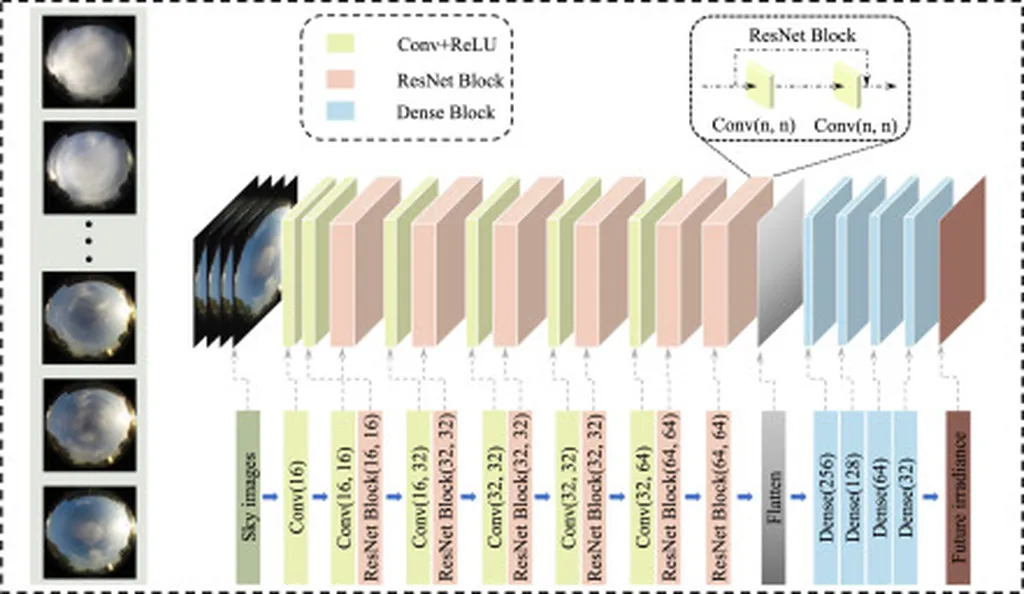In the quest to integrate more renewable energy into power grids, accurate forecasting of photovoltaic (PV) power generation has become a critical challenge. A recent study published in the journal *Energies*, titled “A Hybrid Framework for Photovoltaic Power Forecasting Using Shifted Windows Transformer-Based Spatiotemporal Feature Extraction,” offers a promising solution. Led by Ping Tang of the School of New Energy at North China Electric Power University in Beijing, the research introduces a novel hybrid framework that leverages ground-based sky images to improve PV power predictions.
The study addresses a key issue in renewable energy integration: the variability of solar power due to changing weather conditions. By analyzing ground-based sky images, the researchers can quickly detect cloud movements and extract spatiotemporal features that enhance forecasting accuracy. “Accurate PV power forecasting is essential for mitigating the security and stability challenges associated with PV integration into power grids,” Tang explains. “Our framework aims to provide more reliable predictions, which can significantly benefit grid operators and energy markets.”
The hybrid framework combines a shifted windows Transformer (Swin Transformer), a convolutional neural network, and a long short-term memory network. This combination allows the model to extract comprehensive spatiotemporal feature information, including global spatial, local spatial, and temporal features, from both sky images and PV power data. The results are impressive: the mean absolute error and root mean squared error are reduced by 13.06% and 4.49%, respectively, compared to the benchmark ResNet-18 model.
For the energy sector, these improvements could have substantial commercial impacts. More accurate forecasting can lead to better grid management, reduced energy costs, and enhanced reliability. “Our framework demonstrates competitive predictive performance and generalization capability across different time horizons and weather conditions,” Tang notes. “This could be a game-changer for grid operators looking to optimize their renewable energy integration strategies.”
The research not only advances the technical capabilities of PV power forecasting but also sets the stage for future developments in the field. As renewable energy continues to grow, the need for sophisticated forecasting tools will only increase. This study highlights the potential of combining advanced machine learning techniques with traditional data sources to create more robust and reliable energy systems.
With the energy sector increasingly focused on sustainability and efficiency, the insights from this research could shape the future of renewable energy integration. As Tang and his team continue to refine their framework, the energy industry may soon see even greater advancements in PV power forecasting, ultimately contributing to a more stable and sustainable energy future.

